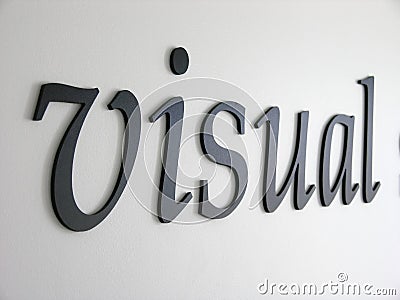Academic Cypher
In hip hop culture, the cypher is a circle of MCs, B-boys/B-girls, beatboxers, etc who freestyle and/or battle one after the other without interruption, exchanging rhymes and flows back and forth or around. The cypher is where training takes place and skills are tested, where people collaborate, and where people create "off the top" or written/choreographed, tapping into the place where thought and action come together to share energy and advance the craft...the Academy should aim to do the same.
Tag: VisualRhetoric

http://thumbs.dreamstime.com/x/visual-34775.jpg
I looked at visual arguments from Megan, Summer, Maury, and Dan, and Charlie. I felt Megan’s visual was making a statement about visually presenting and performing as a certain type of scholar. I loved the comic book style layout of the visuals. Summer’s visual made me a bit sad. I got the idea that her visual was about mortality and “human-ness”. The Vitruvian_Man in the middle, acting as the centerpiece and reminder of how far we come. We know much more about anatomy and physiology, but we all share the same fate. Maury’s image was depicting another perspective of femininity to challenge the typical Disney Princess femininity that we usually see. Dan’s visual was a bit of a challenge. I saw it is as a commentary on the futility of mazes and also how lonely it can be to journey alone. Charlie’s argument was about mind over matter. We have the mental ability to overcome our physical limitations (in regards to exercise and working out).
Charlie, Jenny, Ashley, Maury, Laurie, Megan Mck, and Donovan all commented on my visual. They were all spot on in regards to determining my argument. Overall, I was trying to highlight that AA History is neglected and that AA History Month is necessary. The commenters noted things that I do not think I consciously considered when creating my argument. Maury and Megan Mck both emphasized that I was presenting a story or narrative. I did not realize that I had done that. When I took the screenshots of the video, I was concerned that my audience wouldn’t understand the context if I just showed the lonely AA History column. I added the shot of all the categories to emphasize that we live in a country where people are more comfortable with tackling “Kiwi Fauna” than AA History. It is a neglected and necessary area of study. I added the last visual of the contestants to emphasize that their race and their status (college students). I think Donovan’s interpretation also addressed something I overlooked. I did not consider, as Donovan stated, “the white college students are reluctant to discuss African-American history since this history is still relevant in regard to contemporary oppression, prejudices, and bigotries.” I did not consider multiple arguments when constructing the visual. This made me concerned that I left too much room for interpretation and misunderstanding.
Visual arguments are possible, but all visuals are not arguments. Along the same lines as Blair, I think some visuals make statements or work to persuade, but they are not arguments. What I mean by that is that the visuals do not have “a linguistically explicable claim and one or more linguistically explicable reasons” (qtd in Blair, 345). I do not think that the interpretation of what constitutes an argument is strict because there is a clear distinction between persuasion and argument. Arguments have structural rules, such as premises, claims, reasons, and evidence. I think the fact that these structures can be purposefully misused speaks to their effectiveness and necessity. Visual arguments are definitely possible, but in a space where the verbal and textual are privileged, I think we are too quick to say that visuals are presenting arguments.
Blair, J.A. (2004). The possibility and actuality of visual arguments. Visual Rhetoric in a Digital World: A Critical Sourcebook. Carolyn Handa, Ed. Boston: Bedford/St. Martins.
Pardue, D. (2005). CD cover art as cultural literacy and hip-hop design in Brazil. Education, Communication & Information, 5(1), 61-81.
In this article Pardue explores new practices of cultural expression, meaning making, and identity through rap music CD cover art. Pardue set out to find why certain images, colors, and compositional/design layouts were used on CD cover art. He believed that an examination of hip hop aesthetics would connect to larger hip-hop ideologies. Through ethnographic research and analysis of visual materials, CD cover art, Pardue “suggest[s] that the debate over representation in Brazilian hip-hop is not only a struggle in identity politics for semantic and aesthetic control of a growing phenomenon, but also a provocative exercise in cultural education[…]” (62). Pardue argues that Brazilian hip-hop artists use CD cover art to make connections between ideologies and images. Moreover, he posits that CD cover art plays a significant part in hip hop meaning making. Through interviews, he discovered that many of the hip-hoppers focused on “connecting particular images, colors, and typographies to a range of ideologies, regarding ‘reality’ “ (64). The CD cover art is a part of cultural design, which Pardue defines as a combination of “critical and generative aspects of graphic arts and social science” (67). The hip-hop ideologies and graphics connect “back to material and social conditions of periferia places’ (68). The “marginal” hip-hoppers and “positive” hip hoppers each use different images, typography, and composition to convey their respective ideologies. The former uses visuals “to return the viewer-listener to the reality of life conditions, which are filled with danger, frustration, struggle and partially fulfilled subjectivities,” and the latter “seek to de-center ‘violence’ as the primary discourse of signification” (75). The hip-hoppers use specific typography to represent their messages. For example, stencil like fonts are used to represent the system, but handwritten like fonts are thought to represent hip hop reality. Religious images and typography (i.e. gothic lettering) are sometimes used to present religious beliefs and specific localities or neighborhoods that the hip-hoppers represent. The CD cover art plays a significant role in cultural meaning in Brazilian hip-hop culture. The cover art moves beyond mere representation to connecting “aesthetic aspects of identity as well as the representation of material life conditions (‘reality’) and potential social change” (79). The use of these specific design aesthetics have created guidelines and essentialized certain aspects of Brazilian hip-hop culture. It has also fostered a cultural and technological literacy.
Pardue’s work on CD cover art parallels aspects of American mixtape cover art. Pardue specifically focused on how access to information technology aided Brazilian hip-hoppers in creating new forms of cultural expression. While the same cannot be said for American hip hop scene, his exploration of the connections between images, design, composition, and typography with specific localities and ideologies provides a useful framework for my examination of CD cover art as response to mainstream hip-hop and an attempt to maintain hip-hop ideologies. Moreover, I think Pardue’s theoretical framework of “cultural design” is useful for examining, as he says, “social theory and graphic design” (67). The article overall focuses on the specific design and layout of the CD covers, but Pardue and the artists he interviewed refer to the covers as art. Pardue defines art that is “productive as form and content engage in dialogue ot affect a potentially resistant signifying practice” (68). In regards to the course, Pardue’s exploration of CD cover art adds to our discussion of art vs design.
© 2025 Academic Cypher
Theme by Anders Noren — Up ↑

